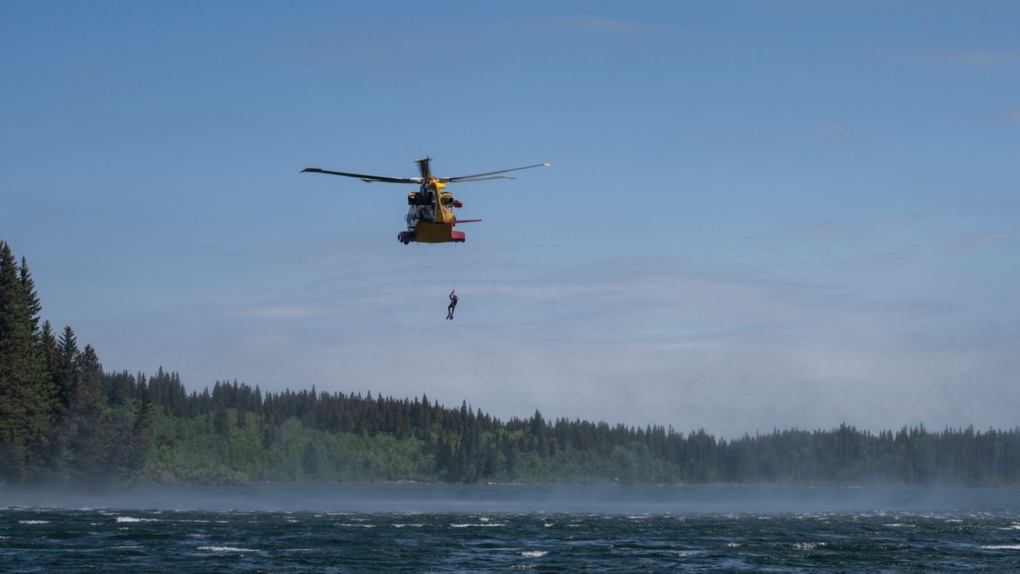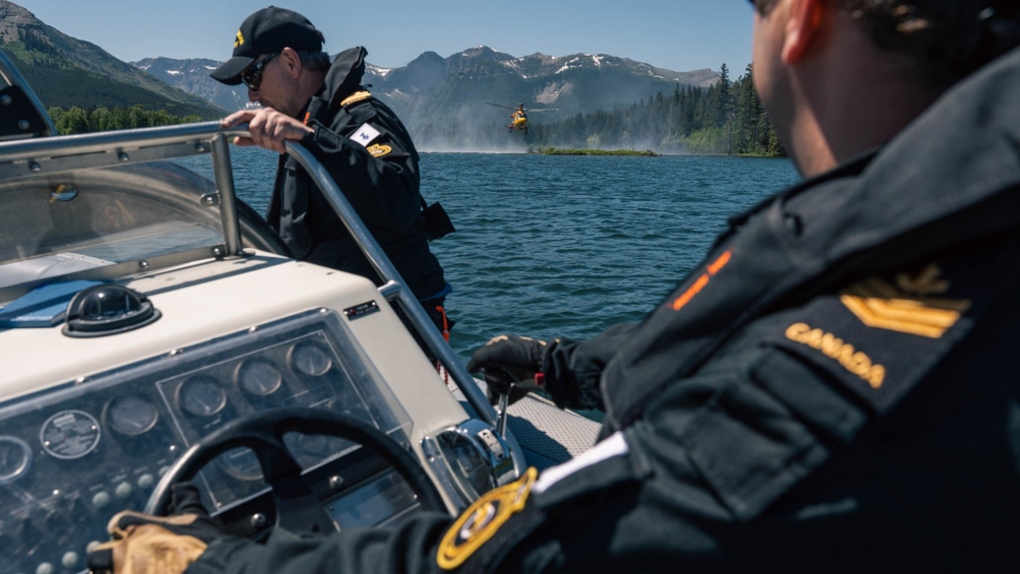Royal Canadian Air Force search and rescue exercise underway in Lethbridge
 Photo courtesy Private Raj Dhagat, Canadian Armed Forces.
Photo courtesy Private Raj Dhagat, Canadian Armed Forces.
More than 100 members of the Royal Canadian Air Force have touched down in Lethbridge for annual search and rescue exercises.
"We're simulating that there is a float plane crash at Beaver Mines Lake, so another team is going to be deployed out there and they're going to parachute to the water where there is the HMCS Tecumseh -- the Navy Reserve -- they have a boat on the lake and we're going to have a helicopter go and extract them," said Capt. Jules Pankoski, an organizer of the Chinthex SAR operations exercise.
CC-130H Hercules planes, CH-146 Griffon helicopters and a CC-138 Twin Otter are part of the training.
Pankoski says Lethbridge and southern Alberta offers a wide range of terrain, including the mountains.
"Being able to operate out of Lethbridge, we are only a stone's throw away from the foothills and the Rocky Mountains, so it gives us some diverse terrain that we can work in that we could be expected to be deployed to work on an operational callout," Pankoski said.
Held by 435 Transport and Rescue Squadron, this exercise includes participants from various Royal Canadian Air Force agencies, including support from 17 Wing Winnipeg and 19 Wing Comox.
Crews will also take advantage of combined training with United States Air Force squadrons, local Ground Search and Rescue teams and members of the Civilian Air Search and Rescue Association.
"It's important that we have these events so that we can prove our capabilities and how we can work with each other, so that when we're called in a real-world environment to effect a rescue that we have the expertise and we have good knowledge of what each other brings to the table," said Lt.-Col. Josh Leveque, commanding officer for 435 Transport and Rescue Squadron.
Along with training at Beaver Mines Lake, a crew took part in a plane rescue near Cranbrook, B.C.
Members had to locate a plane experiencing technical difficulties and guide it back to the airport.
However, as part of the exercise, the plane didn't make it back and landed in a remote area, with members having to rappel down and provide medical attention.
"(This training) is pretty important because the mission may come at any day, any night or weekend," said Warrant Officer Eric Beaudoin, search and rescue technician leader for the 435 Transport and Rescue Squadron.
"We have crews on alert constantly."
The squadron covers 10 million square kilometres extending east to Quebec City and west to the Alberta-B.C. border.
"If another unit would be in need of assistance due to serviceability issue or the size of the incident, we're ready to answer to a mission anywhere in Canada at any time," Beaudoin said.
 Photo courtesy Sailor 1st Class Megan Sterritt, 17 Operations Support Squadron, Winnipeg.
Photo courtesy Sailor 1st Class Megan Sterritt, 17 Operations Support Squadron, Winnipeg.
Training will feature high-angle rescues, finding a lost aircraft, technicians parachuting and water rescues with the help of the Navy.
"The Navy brings a unique skill set -- we bring that maritime skill set," said Lt. John Foster, public affairs officer for the Naval Reserve, Western Region.
"So, on this very large, intricate exercise with many, many moving parts, we have the element of the maritime aspect, so we're bringing down a rigged-haul inflatable boat to help at Beaver Mines Lake."
The exercise is held annually at different cities across the country.
The last time Lethbridge hosted Chinthex was in 2016.
"Although we train almost every day, continually ensuring that our skills are honed and sharpened, we don't always get to work with all the other agencies that we work with on an actual SAR callout, so being able to bring everyone together in one spot and being able to more realistically replicate how we would work together on a callout is really important," Pankoski said.
Training is set to wrap up on June 11.
CTVNews.ca Top Stories

DEVELOPING Person on fire outside Trump's hush money trial rushed away on a stretcher
A person who was on fire in a park outside the New York courthouse where Donald Trump’s hush money trial is taking place has been rushed away on a stretcher.
Mandisa, Grammy award-winning 'American Idol' alum, dead at 47
Soulful gospel artist Mandisa, a Grammy-winning singer who got her start as a contestant on 'American Idol' in 2006, has died, according to a statement on her verified social media. She was 47.
She set out to find a husband in a year. Then she matched with a guy on a dating app on the other side of the world
Scottish comedian Samantha Hannah was working on a comedy show about finding a husband when Toby Hunter came into her life. What happened next surprised them both.
'It could be catastrophic': Woman says natural supplement contained hidden painkiller drug
A Manitoba woman thought she found a miracle natural supplement, but said a hidden ingredient wreaked havoc on her health.
Young people 'tortured' if stolen vehicle operations fail, Montreal police tell MPs
One day after a Montreal police officer fired gunshots at a suspect in a stolen vehicle, senior officers were telling parliamentarians that organized crime groups are recruiting people as young as 15 in the city to steal cars so that they can be shipped overseas.
Vicious attack on a dog ends with charges for northern Ont. suspect
Police in Sault Ste. Marie charged a 22-year-old man with animal cruelty following an attack on a dog Thursday morning.
Senators reject field trip to African Lion Safari amid elephant bill study
The Senate legal affairs committee has rejected a motion calling for members to take a $50,000 field trip to the African Lion Safari in southern Ontario to see the zoo's elephant exhibit.
Tropical fish stolen from Beachburg, Ont. restaurant found and returned
Ontario Provincial Police have landed a suspect following a fishy theft in Beachburg, Ont.
DEVELOPING G7 warns of new sanctions against Iran as world reacts to apparent Israeli drone attack
Group of Seven foreign ministers warned of new sanctions against Iran on Friday for its drone and missile attack on Israel, and urged both sides to avoid an escalation of the conflict.
































